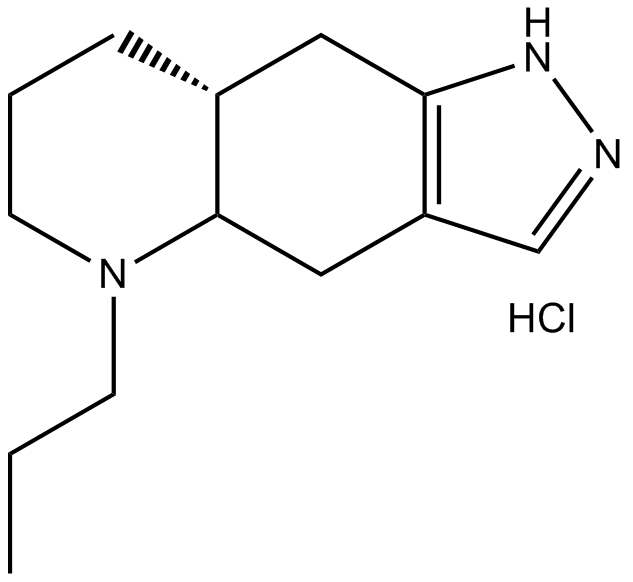(-)-Quinpirole hydrochloride (Synonyms: (-)-LY 171555) |
| Catalog No.GC17877 |
dopamine D2 receptor agonist
Products are for research use only. Not for human use. We do not sell to patients.

Cas No.: 85798-08-9
Sample solution is provided at 25 µL, 10mM.
Quinpirole Hydrochloride ((-)-LY 171555) is a high-affinity agonist of dopamine D2/D3 receptor.
DA content is left brain biased across groups, and although this asymmetry appears greater in saline controls than all drug-treated groups, there is not a significant interaction between Side and Group. When each side is considered separately it can be seen that in the left brain structure, DA levels progressively decrease with chronic quinpirole treatment, with the QQ rats differing significantly from saline controls. In contrast, right cortical DA levels are only altered significantly (increased) by acute Quinpirole. It can be found that DOPAC levels are also left brain biased across groups. However, no significant Group or interaction effects are found. Rats receiving acute Quinpirole show a selective increase in DA content and decrease in turnover ratio, relative to either saline controls or the QS group. Sensitized (QQ) rats however, have elevated DOPAC levels in comparison to the acute quinpirole group. In striatum as well, all three measures of DA function differed significantly across groups (DA, F3,33=6.27, P=0.0020; DOPAC, F3,33=7.98, P=0.0004; turnover ratio, F3,33=16.85, P<0.0001). In the acute quinpirole rats, both DOPAC and turnover ratio are significantly reduced relative to all other groups. In QQ rats, DOPAC levels are significantly greater than all other groups, while for turnover ratio, both chronic quinpirole groups were increased compared to both chronic saline groups[1].
References:
[1]. Sullivan RM, et al. Effects of quinpirole on central dopamine systems in sensitized and non-sensitized rats. Neuroscience. 1998 Apr;83(3):781-9.
Average Rating: 5 (Based on Reviews and 23 reference(s) in Google Scholar.)
GLPBIO products are for RESEARCH USE ONLY. Please make sure your review or question is research based.
Required fields are marked with *




















